How to Model and Analyze a Cable Lifting Structure
Learn how to perform a cable analysis on a structure with this simple tutorial. 查看如何对框架进行建模, apply loads to simulate equipment and other dead loads, before analysing the structure using SkyCiv’s FEA software.
The walkthrough will also look at common issues with solving cables.
Model your steel frame
Let’s start by building out a simple frame, this will be what we’re lifting using the cable elements. We’re going to make the most of the following handy modeling features:
- 笔工具 – model quickly using the pen tool
- Multi-edit – hold CTRL and drag the mouse to select and multi-edit parts of your model
- Search Sections – quick add sections from our library in seconds, using search
- 区域负荷 – one way, 自动计算的双向和风荷载面积荷载 (并重新调整!) 成员的朝贡地区.
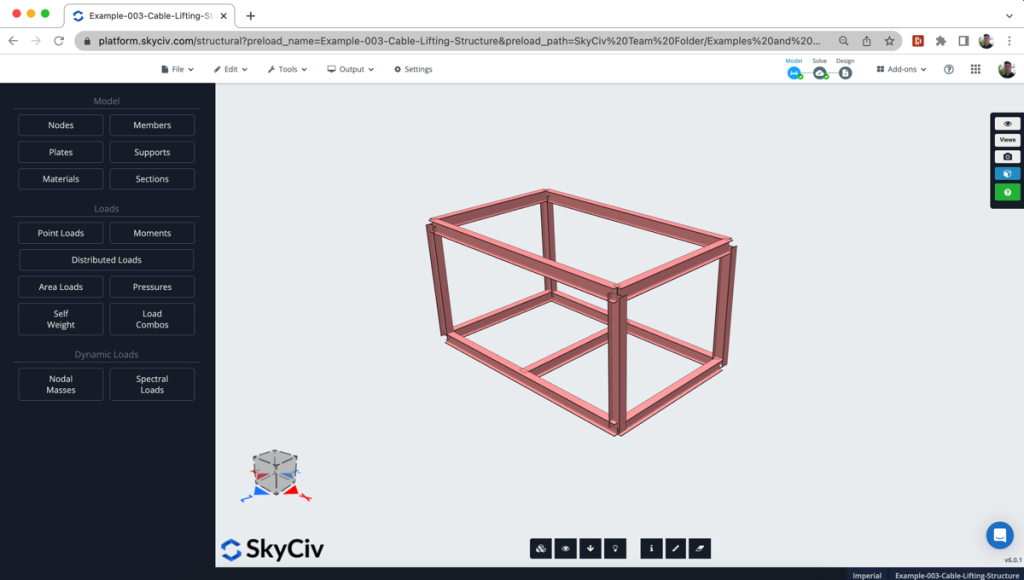
Adding your cable elements
So now we add the cables. Cables are non-linear elements, 所以基本上添加方式与添加任何其他成员相同. 主要区别在于电缆永远不会受到压缩, 具有零弯曲, 扭转或剪切能力 (他们只是紧张) 它们经常表现出大位移和非线性行为. 因此,分析这些类型的单元的处理方式与具有弯曲和其他强度的常规钢单元略有不同.
电缆元件的建模方式与任何其他元件的建模方式相同. 然而, 当你分配属性时, 你会选择 类型: 电缆. 这将自动为单元分配固定端固定装置,并将其视为解算器中的电缆单元.
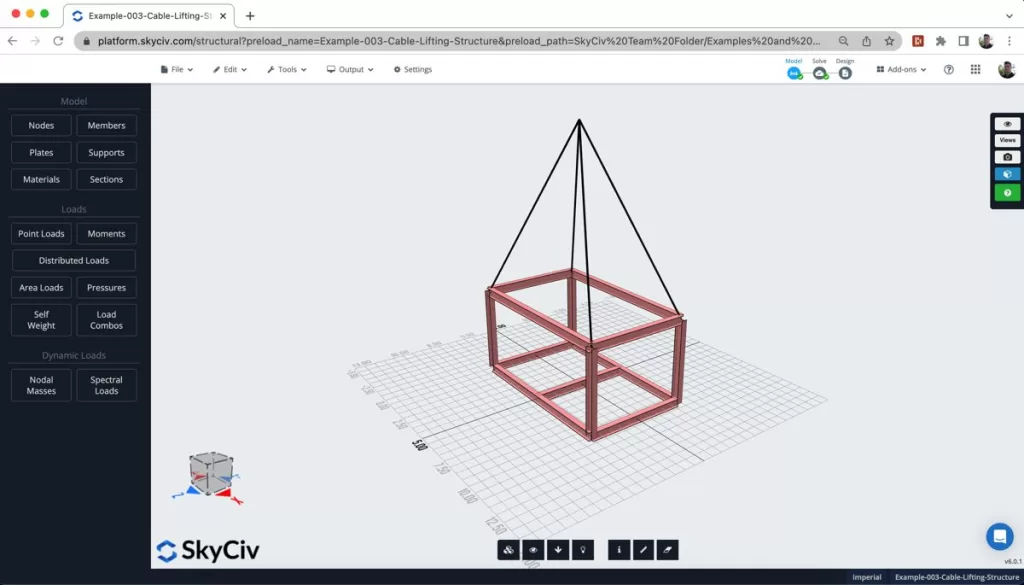
打开渲染器视图, 清楚地显示电缆元件 (在这个模型中, 表示为部分 ID 2).
Applying equipment and other loads
将设备载荷应用于框架结构与常规分析模型相同. 在这种情况下,我们施加了设备负载 (使用 双向面积荷载) 和其他一些静载 (使用 单向面积荷载).
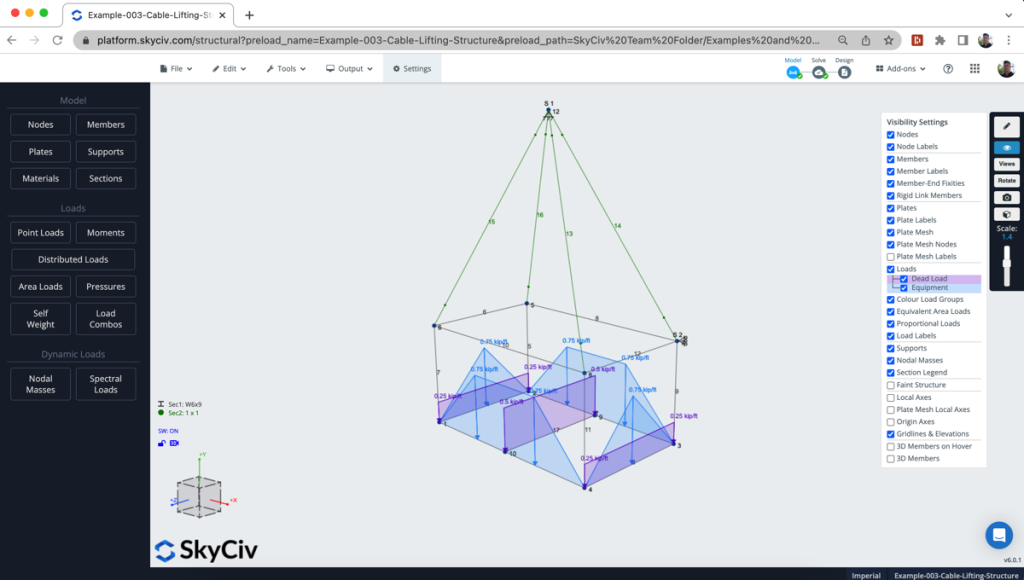
Performing a non-linear analysis and repairing stability issues
Cables typically undergo large deformations when subjected to significant loads. Geometric nonlinearity accounts for the changes in cable geometry as it deforms. The initial assumption of linearity in the cable’s response (as in linear static analysis) becomes invalid when the deformations become significant.
It is necessary to use a non-linear analysis when cable elements are present, 因为非线性分析考虑了这些几何变化并提供了更准确的结果. 当您加载或拉紧电缆时, 每一步之后,结构都发生了很大的移动,以至于载荷不一定施加在与之前相同的位置.
因此, 对于这个结构,我们需要执行非线性分析. 注意: 如果用户选择 线性静态分析, 它会自动恢复到非线性分析.

Reviewing the results
Once the analysis is successfully completed, it’s a good idea to check the deflections to (一个) ensure the numbers are reasonable and (b) animate the deflection of the structure to see if it deforms in a way you’d expect. If cable elements are not solving correctly, you will see jagged deflection curves and could be an indication that the cables are under or overloaded.
A well behaving cable element should be smooth, sagging and showing tension-only deformations, as seen in the example model:
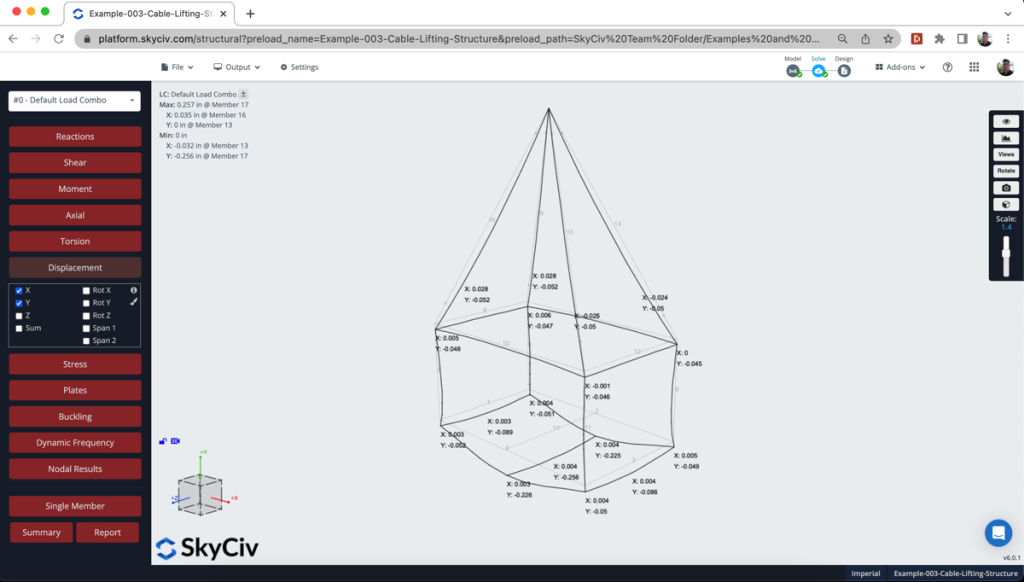
另一个值得回顾的结果, 是索腱中的轴向应力. 明显, 因为电缆没有剪切或弯曲能力, 所有的力都通过元件中的张力传递. 默认情况下,结构将突出显示超过材料屈服/极限强度的任何应力. 您还可以输入您自己的自定义许用应力, 以便您可以轻松识别超出压力限制的元素:
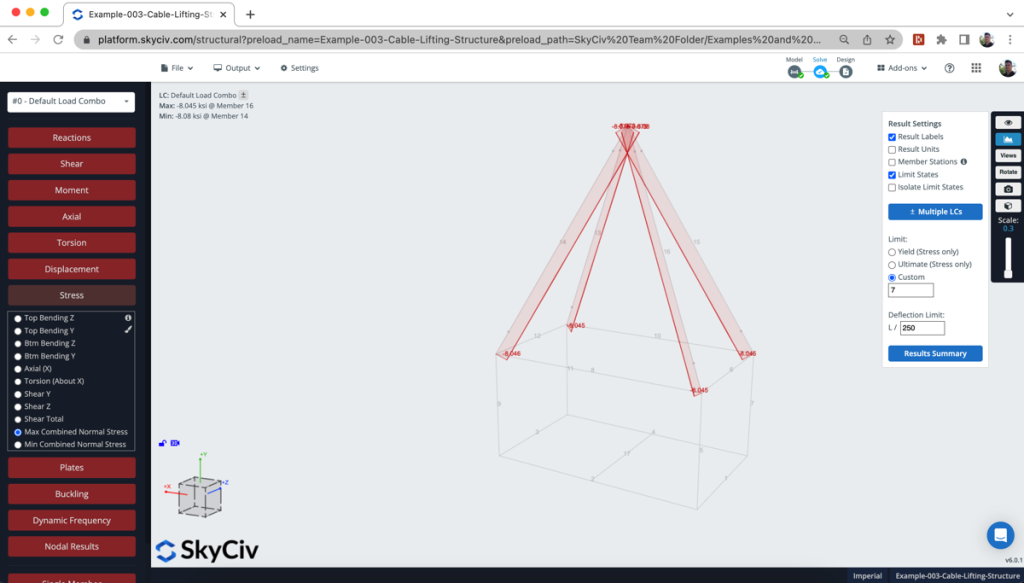
Another result worth considering is the elongation in your cable. Similar to the deformation result previously reviewed, however in this case we are looking at how far the cable has stretched. There are often limits to what is acceptable when it comes to designing cables. Displacement analysis helps in evaluating the cable’s behavior under different load conditions and ensures that the displacements are within permissible limits.
为了这, 我们可以使用单一成员分析并打开 局部位移 X 这将为我们提供电缆沿其自身轴线的总偏转. 在下面的例子中, 电缆被拉长 2.1164 英寸:
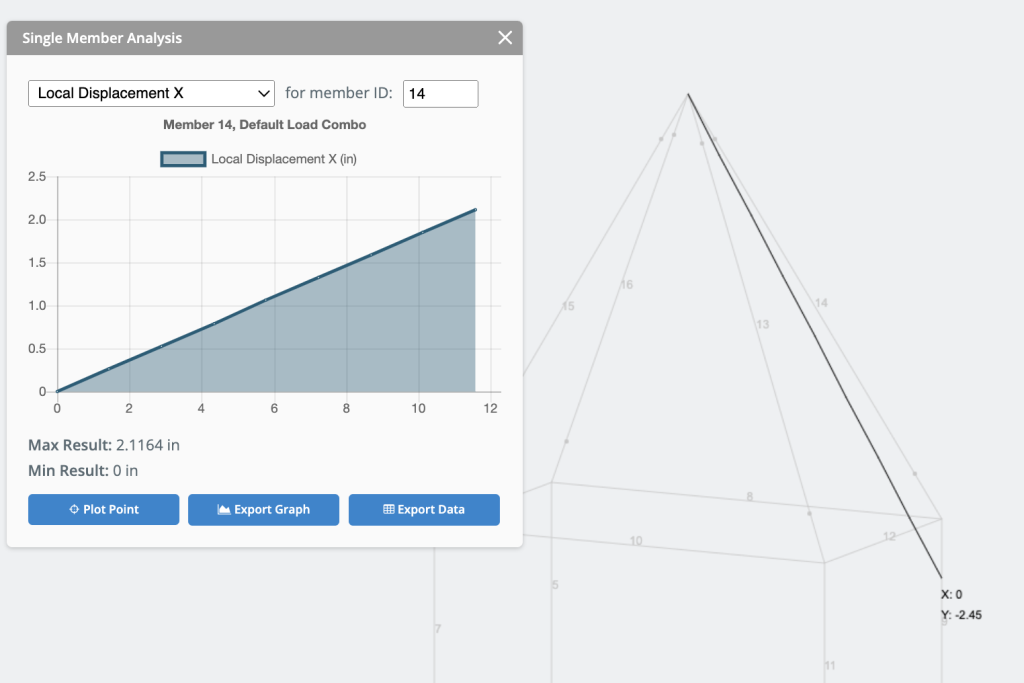
Common solving issues in cable analysis
如果您的电缆结构未能解决 (很多时候由于不稳定或无法收敛), 以下是一些需要检查或尝试的常见事项:
- 检查直径尺寸
- 检查电缆是否过载/不足
- 降低收敛精度
- 添加额外的支持
- 检查您的其他会员
常问问题
Cable sag is accounted for by considering the cable’s self-weight and the applied loads, which cause deflection. Engineers typically use catenary equations or numerical methods to determine the cable’s shape and sag under specific loading conditions.
是的, you can apply a prestress load to a cable element
是的, however the software will automatically handle this for you. In other software, 电缆元件可以分成更小的元件, 调整起来可能很麻烦. SkyCiv 将保留该元素作为单一成员, 并且只在解算器一侧分割元素 – 使建模和更改变得更容易.

